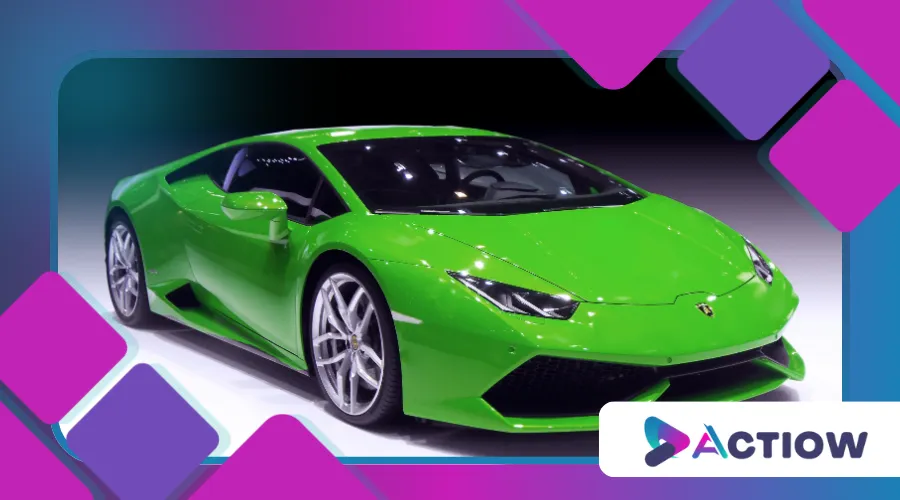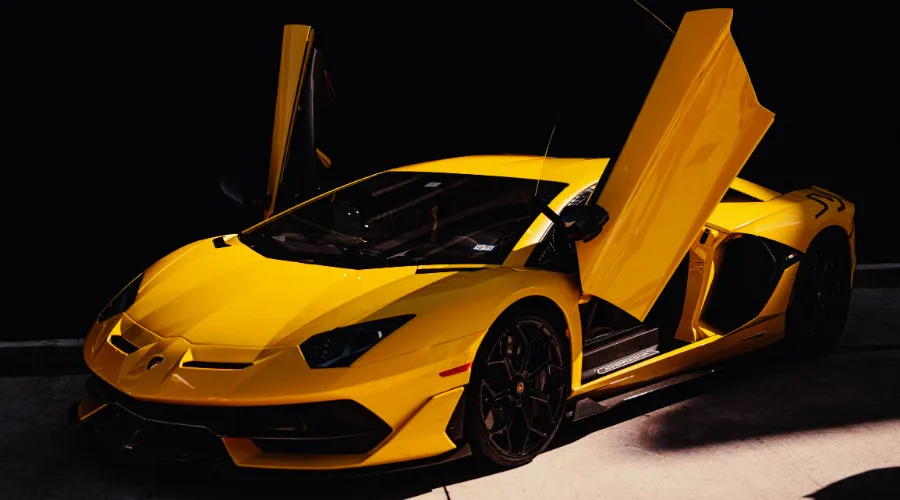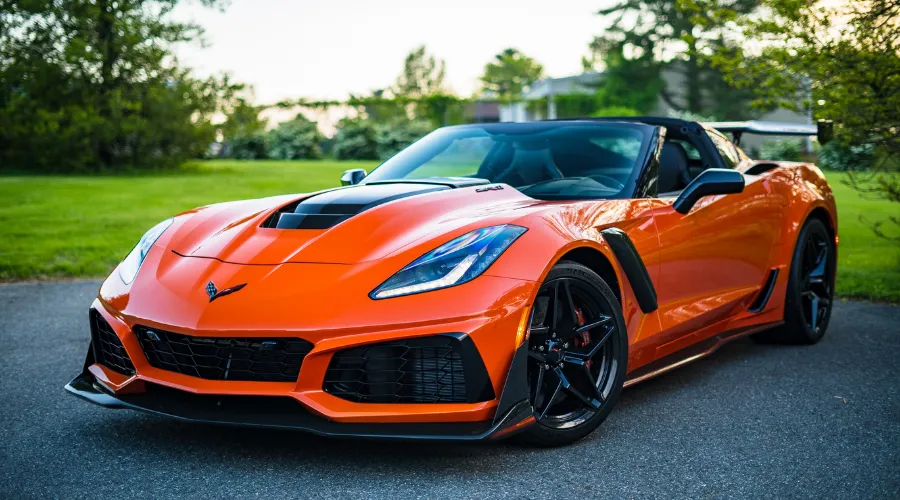The History of Lamborghini: From Tractors to Supercars

Anúncios
The history of Lamborghini is a tale of defiance, innovation, and relentless pursuit of performance—one that began not with sports cars, but with tractors.
Ferruccio Lamborghini, a wealthy industrialist, founded the company in 1963 out of sheer frustration with Ferrari.
His vision? To craft grand tourers that combined raw power with refined elegance.
Anúncios
Today, Lamborghini stands as a symbol of automotive excellence, blending cutting-edge engineering with avant-garde design.
This unique blend of performance and style has attracted a loyal following, making Lamborghini a coveted brand among car enthusiasts and collectors alike.
The brand’s ability to innovate while maintaining its core values has allowed it to thrive in a competitive market, continually setting new standards for what a supercar can be.
From Humble Beginnings: The Tractor Empire
Before revolutionizing the supercar industry, Ferruccio Lamborghini built his fortune in agriculture.
After World War II, he recognized Italy’s need for affordable farming equipment and founded Lamborghini Trattori in 1948.
His tractors, built from surplus military parts, became a national success.
By the 1950s, Lamborghini was one of Italy’s most prominent tractor manufacturers—proof of his mechanical genius and business acumen.
This industrial prowess gave Ferruccio the financial freedom to indulge in luxury cars.
However, his dissatisfaction with Ferrari’s reliability issues led to a legendary confrontation with Enzo Ferrari, sparking the birth of Automobili Lamborghini.
This pivotal moment not only marked the transition from tractors to supercars but also set the stage for a rivalry that would define the automotive landscape for decades.
Ferruccio’s passion for high-performance vehicles was ignited, leading him to apply his engineering skills to create cars that would challenge the status quo.
+ Cars That Changed the Automotive Industry: Revolutionary Models That Redefined Mobility
1963: The Birth of a Legend
The history of Lamborghini as an automaker began in Sant’Agata Bolognese, where Ferruccio established his car company.
Unlike Ferrari, which prioritized racing, Lamborghini focused on road-going grand tourers—powerful yet comfortable.
The first model, the 350 GT (1964), featured a 3.5L V12 designed by Giotto Bizzarrini.
With 280 horsepower, it was an instant success, proving that Lamborghini could rival Ferrari on its own terms.
By 1966, the iconic Miura redefined supercars forever.
Its mid-engine layout, penned by Marcello Gandini of Bertone, set the blueprint for modern hypercars.
The Miura wasn’t just fast—it was a rolling sculpture, embodying Lamborghini’s philosophy of blending art with engineering.
This groundbreaking design not only captured the imagination of car enthusiasts but also established Lamborghini as a serious contender in the automotive world.
The legacy of the Miura continues to influence supercar design, demonstrating Lamborghini’s ability to set trends rather than follow them.
Table 1: Lamborghini’s Early Milestones
| Year | Model | Significance |
|---|---|---|
| 1964 | 350 GT | First production model, established Lamborghini’s GT legacy |
| 1966 | Miura | World’s first supercar, mid-engine revolution |
| 1974 | Countach | Radical wedge design, pop culture icon |

Challenges and Reinvention: The 1970s–1990s
The 1973 oil crisis hit Lamborghini hard.
Ferruccio sold the company, leading to a turbulent era of ownership changes.
Despite financial struggles, Lamborghini continued innovating.
The Countach (1974), with its scissor doors and aggressive styling, became a poster car for a generation.
However, by the late 1980s, the brand was struggling—until Chrysler’s acquisition in 1987 brought much-needed investment.
The Diablo (1990) marked Lamborghini’s resurgence.
With a top speed of 202 mph, it was the fastest production car of its time.
Yet, it wasn’t until Volkswagen Group’s takeover in 1998 that Lamborghini truly stabilized, gaining access to Audi’s engineering resources.
This partnership not only provided financial security but also allowed Lamborghini to improve its manufacturing processes and quality control.
As a result, Lamborghini was able to focus on developing new models that pushed the boundaries of performance and design.
The brand’s ability to adapt during challenging times demonstrated its resilience and commitment to excellence.
++ 10 Rarest Cars in the World: Vehicles Worth Millions
The Modern Era: Innovation and Electrification
Under Audi’s stewardship, Lamborghini entered a golden age.
The Murciélago (2001) and Gallardo (2003) became best-sellers, with the latter surpassing 14,000 units—a record for the brand.
The history of Lamborghini took another leap with the Aventador (2011), featuring a carbon-fiber monocoque and a 700+ hp V12.
Today, Lamborghini embraces hybridization.
The Revuelto (2023), its first plug-in hybrid, boasts 1,001 hp while maintaining the brand’s signature roar.
According to a 2023 report by Statista, Lamborghini’s global sales reached 9,233 units in 2022—proof of its enduring appeal.
This shift towards electrification reflects the brand’s commitment to sustainability while still delivering the exhilarating performance that Lamborghini is known for.
By integrating hybrid technology, Lamborghini aims to attract a new generation of environmentally-conscious consumers without sacrificing the thrill of driving.
The brand continues to innovate, ensuring that its vehicles remain at the forefront of automotive technology.

Table 2: Lamborghini’s Evolution (2000–Present)
| Year | Model | Innovation |
|---|---|---|
| 2001 | Murciélago | Successor to Diablo, introduced carbon fiber |
| 2011 | Aventador | Lightweight chassis, ISR transmission |
| 2023 | Revuelto | First V12 hybrid, 1,001 hp |
For more detailed insights on Lamborghini’s history and models, visit Lamborghini’s Official Website.
Why Lamborghini Still Matters
The history of Lamborghini is more than a corporate timeline—it’s a story of challenging conventions.
Unlike Ferrari, which emerged from racing, Lamborghini was born from a desire to build the ultimate road car.
This philosophy persists today, with models like the Urus SUV expanding the brand’s reach without diluting its exclusivity.
As Lamborghini moves toward electrification, it remains committed to emotion-driven design.
The upcoming Lanzador electric concept (2028) promises to uphold the brand’s legacy while embracing sustainability.
Lamborghini’s unique position in the automotive market allows it to maintain its identity while adapting to changing consumer preferences.
For enthusiasts, the brand represents not just performance but also a lifestyle—a blend of luxury, power, and Italian craftsmanship.
This enduring appeal is reflected in the brand’s strong community of fans and collectors, who celebrate Lamborghini’s rich heritage.
Conclusion: A Legacy of Disruption
From tractors to hypercars, the history of Lamborghini is a testament to bold vision.
Ferruccio’s defiance of Ferrari birthed a brand that continues to push boundaries.
Whether through the Miura’s revolution or the Revuelto’s hybrid power, Lamborghini proves that innovation and passion go hand in hand.
For enthusiasts, owning a Lamborghini isn’t just about speed—it’s about being part of a legacy that refuses to follow the rules.
The brand’s commitment to excellence and innovation ensures that it remains a leader in the automotive world.
As Lamborghini continues to evolve, it will undoubtedly inspire future generations of automotive engineers and designers.
